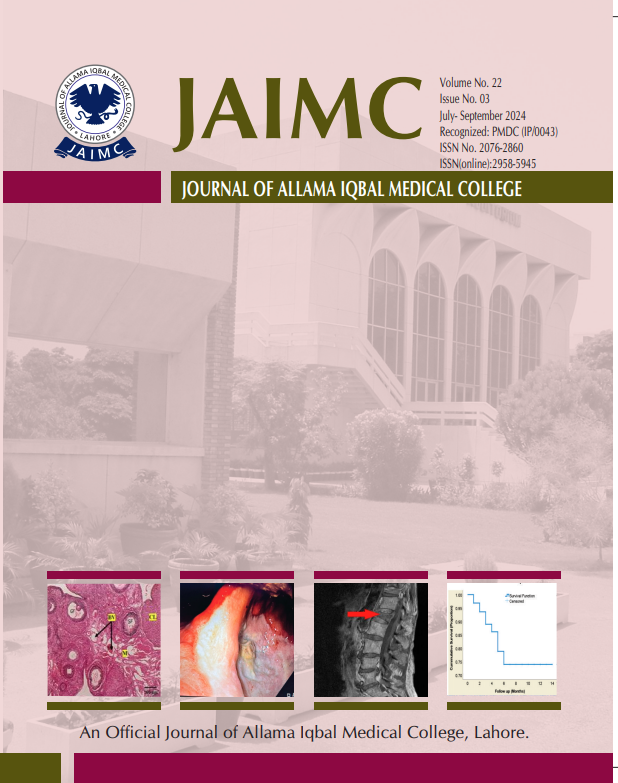Effects of Spearmint (Peppermint) on Morphological, Histological and Biochemical Aspects of Ovaries
DOI:
https://doi.org/10.59058/bbnxgy14Keywords:
Morpho-Histobiochemical Effects of Spearmint on OvariesAbstract
Background and Objective: Spearmint (Peppermint), known for its aromatic and medicinal properties, is used in various products globally, including food, confectionaries, chewing gum, and toothpaste. While it has been known for its potential therapeutic benefits, this study aimed to investigate the effects of spearmint on the morphology, histology, and biochemistry of ovaries in Wistar albino rats.
Methods: This Experimental animal study involved 30 adult female albino mice (200–250 g), divided into three equal groups. Group A (Control) received 15 ml/kg distilled water, Group B (Low Dose) received 0.3 g/kg body weight ethanol extract of peppermint leaves, and Group C (High Dose) received 0.6 g/kg body weight. Treatments were administered via gastric infusion for 30 days. Ovaries were dissected, weighed, and histological slides were prepared using H&E staining. Parameters, including capsule thickness, follicle diameter, and corpus luteum, were analyzed with ImageJ® software. Data were processed using SPSS 20.0, with significance level as p < 0.05.
Results: Final ovarian weights (Group A: 0.19±0.02 g, Group B: 0.36±0.09 g, Group C: 0.49±0.05 g; p<0.001) and Relative Tissue Weight Index (RTWI; Group A: 0.08, Group B: 0.17, Group C: 0.27; p<0.001) increased significantly in experimental groups. Histological analysis revealed decrease in follicle diameters with higher doses of spearmint in both secondary and graafian follicle (secondary follicle; Group A 29.10±4.11 µm, Group B 22.31±5.51 µm, Group C 15.20±2.94 µm and Graafian follicle; Group A 53.75±8.01 µm, Group B 35.87±4.97 µm, group C 23.64±4.96 µm). Decreased corpus luteum size, along side significant reductions in serum progesterone levels post-experiment (Group A: 55.29±5.94 ng/ml, Group B: 23.01±8.89 ng/ml, Group C: 4.12±0.70 ng/ml; p<0.001) were also observed.
Conclusion: This study reveals detrimental effects of excessive spearmint leaf consumption on rat ovarian histology, body weight, and progesterone levels. Caution, particularly during pregnancy, is advised due to potential risks to hormonal and ovarian function. Further research is essential to understand the mechanisms and assess the implications for human health.
Key words: spearmint, ovarian morphology, progesterone level
Downloads
Published
Issue
Section
License
Copyright (c) 2025 Dr. Uzma Ali, Dr. Momna Riaz, Dr. Amber Salman, Dr. SHireen Hamid, Dr. Saqib Mansoor (Author)

This work is licensed under a Creative Commons Attribution-NonCommercial-NoDerivatives 4.0 International License.
You are free to:
- Share — copy and redistribute the material in any medium or format
- The licensor cannot revoke these freedoms as long as you follow the license terms.
Under the following terms:
- Attribution — You must give appropriate credit , provide a link to the license, and indicate if changes were made . You may do so in any reasonable manner, but not in any way that suggests the licensor endorses you or your use.
- Non-Commercial — You may not use the material for commercial purposes .
- No-Derivatives — If you remix, transform, or build upon the material, you may not distribute the modified material.
- No additional restrictions — You may not apply legal terms or technological measures that legally restrict others from doing anything the license permits.
Notices:
You do not have to comply with the license for elements of the material in the public domain or where your use is permitted by an applicable exception or limitation .
No warranties are given. The license may not give you all of the permissions necessary for your intended use. For example, other rights such as publicity, privacy, or moral rights may limit how you use the material.


